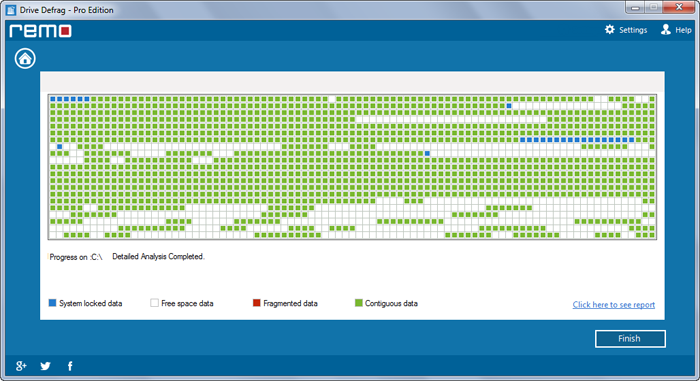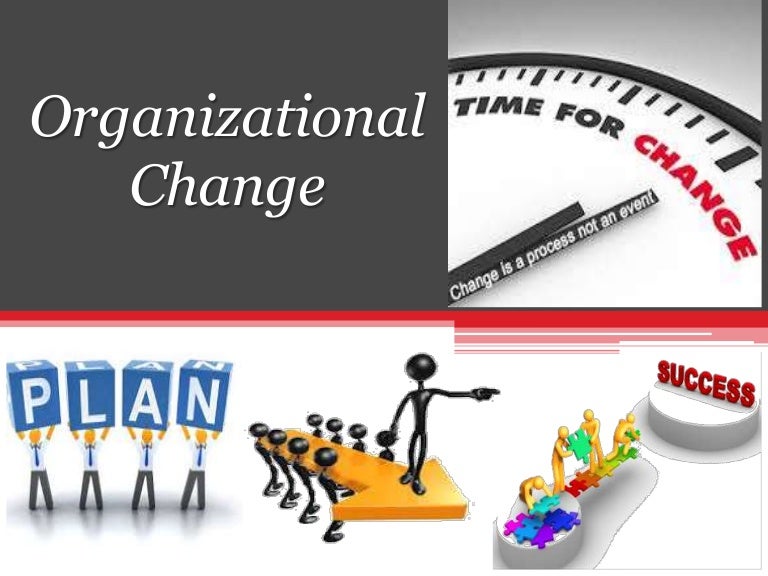
Managing Organizational Change ORGANIZATIONAL CHANGE PROCESS – STEPS TO A SUCCESSFUL CHANGE Ph. D Ramona Petrescu University of Craiova Faculty of Economics Craiova, Romania Abstract: Organizational change is a planned effort to improve a business’s capacity to get work done and better serve its market. Organizational change is about people. Real change happens when people realize that a new …
Organizational Behavior and Organizational Change
Organizational Change SAGE Publications. organization with many perspectives on strategic change and organization development. The role of the manager or a team of leaders is crucial for the change. Those changes range both from technological to structural change and from psychological transitioning to organization downsizing (Choi, 1995). Organizational changes deal with both, life. Although change may be one of the most studied topic in organization theory (Cunha & Cunha, 2003), organizational change has been studied extensively as a phenomenon it and of itself but only a few researchers and practitioners have dealt with such change across all levels of an organization as experienced by those involved. Having.
The Forces of Freedom and Change alliance (FFC, Alliance for Freedom and Change, AFC, or Declaration of Freedom and Change, DFC) is a wide political coalition of civilian and rebel coalitions of Sudanese groups, including the Sudanese Professionals Association, No to Oppression against Women Initiative, MANSAM, the Sudan Revolutionary Front, the National Consensus Forces, Sudan Call, the change, how it works, different factors which moves organization to change, steps for change, resistance for change, change forces, change management approaches and last an example of General Motor (GM) has given that how change was taken place in the organization and what was the strategies for change management. Recommendations and conclusion
This article presents a description of the Planned vs. Unplanned Changes and the internal as well as external factors as the primary forces dictate organizational change. It explains the taxonomy that results as a consequence of the combination of these two dimensions in the form of Planned Internal Change, Unplanned Internal Change, Planned External Change and Unplanned External Change. Forces of change 4. I NDUSTRY 4.0 can transform organizations’ pro-cesses and operations. Below, we explore some key insights that can enable business leaders to visualize the ways in which the Fourth Industrial Revolution could affect their worlds. Industry 4.0 touches everything in our daily lives The Fourth Industrial Revolution is important to understand because it doesn’t just touch
transforming the organization (bending it toward another orientation). Greenwood and Hinings (1996, p.1024) note that ficonvergent change is fine tuning the existing orientation.fl Because of the pace of change today, it is radical, not convergent change in which we are interested. Therefore, it is necessary to .. natural .. organizational change process, illustrated on the left hand side of figure 2.4.1 (the unshaded area), has the following principal characteristics: • Destabilizing forces, which may originate from either inside or outside the organization, disrupt the status quo of the organization.
Restraining forces hinder change because they push employees in the opposite direction. Therefore, these forces must be analyzed and Lewin’s three-step model can help shift the balance in the direction of the planned change. According to Lewin, the first step in the process of changing behavior is to unfreeze the existing situation or status quo. The status quo is considered the equilibrium Organizational Change. Internal and External Forces - Katarzyna Szydlowska - Academic Paper - Business economics - Business Management, Corporate Governance - Publish your bachelor's or master's thesis, dissertation, term paper or essay
Any changes in these political and legal factors may affect the organization operation. Internal Forces. It is not only the changes in external factors, which may necessitate organizational changes; any change in organization’s internal factors may also necessitate changes. Such a change is required because of two reasons: changes in organization is to remain effective. Change can be determined by the forces of the internal environment of the organization. Low productivity, absenteeism, turnover, sabotage, strikes are factors indicating that change management has become necessary. In many cases, internal forces that arise in response to organizational changes are designed
organization with many perspectives on strategic change and organization development. The role of the manager or a team of leaders is crucial for the change. Those changes range both from technological to structural change and from psychological transitioning to organization downsizing (Choi, 1995). Organizational changes deal with both • Change must continue to be a major management objective and responsibility. • The ability to take advantage of opportunities and act promptly is a determining factor in an organization’s success and longevity. • Lasting change only takes place when all members of the organization sincerely buy into it.
Restraining forces hinder change because they push employees in the opposite direction. Therefore, these forces must be analyzed and Lewin’s three-step model can help shift the balance in the direction of the planned change. According to Lewin, the first step in the process of changing behavior is to unfreeze the existing situation or status quo. The status quo is considered the equilibrium of the organization to adapt to changes and be more Agile. Changing the agility of individuals and groups in the organization. Goals for Change: Improving the ability of the organization to adapt to changes and be more Agile. Changing the agility of individuals and groups in the organization. Managing Change Enhancing organizational Agility
FORCES FOR CHANGE IN ORGANIZATION- Free online tutorials for Principles of Management and Organisational Behaviour (12900) courses with reference manuals and examples. Organizational Change: Case Study of General Abstract— The main purpose of this article was to elaborate and bring to light the core concept of the organization change, how it works, diverse factors which moves organization to change, steps for change, resistance for change, change forces, change management approaches and last an example of General Motor (GM) has given that how change
This article presents a description of the Planned vs. Unplanned Changes and the internal as well as external factors as the primary forces dictate organizational change. It explains the taxonomy that results as a consequence of the combination of these two dimensions in the form of Planned Internal Change, Unplanned Internal Change, Planned External Change and Unplanned External Change. PDF Large, top-down organizations tend to be bureaucratic, less innovative, and more resistant to change. The following 4 forces prevent such an...
a fundamental culture change usually is necessary. Culture change facilitates other change by making the work force more comfortable with and receptive to organizational change. Done well, culture change helps transform the organization and makes change a constant presence rather than a looming threat. This article presents a description regarding how both internal and external factors influence organizational change and its relative interdependence for helping an organization survive and grow. External forces are the environmental forces of change and are beyond the control of an organization, but majorly influence an organization's change management strategy.
A variety of forces exist in the organization for change externally as well as internally or with in the organization. External forces for change: external forces may prevail round the organization it may be customer, supplier, economic condition, political stability, technological change, and international business development. of the organization to adapt to changes and be more Agile. Changing the agility of individuals and groups in the organization. Goals for Change: Improving the ability of the organization to adapt to changes and be more Agile. Changing the agility of individuals and groups in the organization. Managing Change Enhancing organizational Agility
Primer Organizational Change
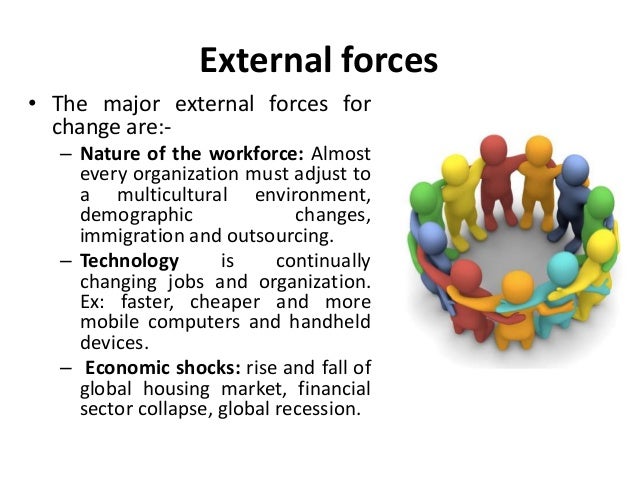
ORGANIZATIONAL CHANGE Meaning Forces for change. change situation in terms of driving forces or factors acting to change the current condition (forces for change) and resisting forces or factors acting to inhibit change (resistance to change). These forces may originate in the internal or external environment of the organization or in the behavior of the school leader., -Lambeth Change Management Team, Change Management Toolkit. As a Competitive Tactic Change management is the continuous process of aligning an organization with its marketplace—and doing so more responsively and effectively than competitors. -Lisa M. Kudray and Brian H. Kleiner, “Global Trends in Managing Change,” Industrial.
Organizational Change Process steps to a successful change
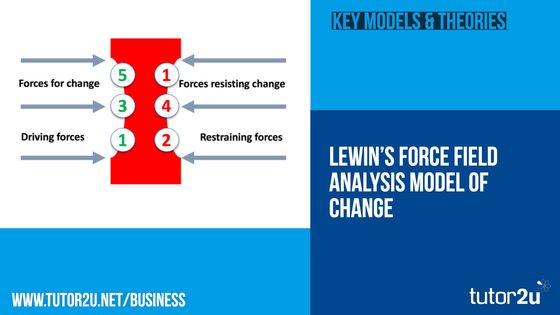
Organizational Change Process steps to a successful change. -Lambeth Change Management Team, Change Management Toolkit. As a Competitive Tactic Change management is the continuous process of aligning an organization with its marketplace—and doing so more responsively and effectively than competitors. -Lisa M. Kudray and Brian H. Kleiner, “Global Trends in Managing Change,” Industrial https://en.wikipedia.org/wiki/Union_of_Forces_for_Change change situation in terms of driving forces or factors acting to change the current condition (forces for change) and resisting forces or factors acting to inhibit change (resistance to change). These forces may originate in the internal or external environment of the organization or in the behavior of the school leader..

a fundamental culture change usually is necessary. Culture change facilitates other change by making the work force more comfortable with and receptive to organizational change. Done well, culture change helps transform the organization and makes change a constant presence rather than a looming threat. Change, as a process, is simply modification of the structure or process of a system. It may be good or bad, the concept is descriptive only." Forces for change. There are a number of factors both internal and external which affect organizational functioning. Any change in these factors necessitates change in an organization. The more important
All these factors put pressure on the modern organization to change its Technologies and marketing strategies. 3. Technology( internal Forces) Technology is a main external force which calls for the management or organizational change. 27/03/2017 · Twelve Forces That Will Radically Change How Organizations Work. The New New Way of Working Series. March 27, 2017 By Vikram Bhalla, Susanne Dyrchs, and Rainer Strack. A tidal wave of change is coming that will soon make the way we work almost unrecognizable to today’s business leaders. In an age of rapidly evolving technologies, business models, demographics, and even …
• Change must continue to be a major management objective and responsibility. • The ability to take advantage of opportunities and act promptly is a determining factor in an organization’s success and longevity. • Lasting change only takes place when all members of the organization sincerely buy into it. organization with many perspectives on strategic change and organization development. The role of the manager or a team of leaders is crucial for the change. Those changes range both from technological to structural change and from psychological transitioning to organization downsizing (Choi, 1995). Organizational changes deal with both
This article presents a description of the Planned vs. Unplanned Changes and the internal as well as external factors as the primary forces dictate organizational change. It explains the taxonomy that results as a consequence of the combination of these two dimensions in the form of Planned Internal Change, Unplanned Internal Change, Planned External Change and Unplanned External Change. a fundamental culture change usually is necessary. Culture change facilitates other change by making the work force more comfortable with and receptive to organizational change. Done well, culture change helps transform the organization and makes change a constant presence rather than a looming threat.
of the organization to adapt to changes and be more Agile. Changing the agility of individuals and groups in the organization. Goals for Change: Improving the ability of the organization to adapt to changes and be more Agile. Changing the agility of individuals and groups in the organization. Managing Change Enhancing organizational Agility The Forces of Freedom and Change alliance (FFC, Alliance for Freedom and Change, AFC, or Declaration of Freedom and Change, DFC) is a wide political coalition of civilian and rebel coalitions of Sudanese groups, including the Sudanese Professionals Association, No to Oppression against Women Initiative, MANSAM, the Sudan Revolutionary Front, the National Consensus Forces, Sudan Call, the
forces are those forces which positively affect and enhance the desired change. They may be persons, trends, resources, or information. Opposing them are therestraining forces, which represent the obstacles to the desired change. As these two sets of forces exist within an organization, they create a certain equilibrium. That is, if the weights transforming the organization (bending it toward another orientation). Greenwood and Hinings (1996, p.1024) note that ficonvergent change is fine tuning the existing orientation.fl Because of the pace of change today, it is radical, not convergent change in which we are interested. Therefore, it is necessary to
Organizational Change. Internal and External Forces - Katarzyna Szydlowska - Academic Paper - Business economics - Business Management, Corporate Governance - Publish your bachelor's or master's thesis, dissertation, term paper or essay transforming the organization (bending it toward another orientation). Greenwood and Hinings (1996, p.1024) note that ficonvergent change is fine tuning the existing orientation.fl Because of the pace of change today, it is radical, not convergent change in which we are interested. Therefore, it is necessary to
forces are those forces which positively affect and enhance the desired change. They may be persons, trends, resources, or information. Opposing them are therestraining forces, which represent the obstacles to the desired change. As these two sets of forces exist within an organization, they create a certain equilibrium. That is, if the weights change, how it works, different factors which moves organization to change, steps for change, resistance for change, change forces, change management approaches and last an example of General Motor (GM) has given that how change was taken place in the organization and what was the strategies for change management. Recommendations and conclusion
Forces of change 4. I NDUSTRY 4.0 can transform organizations’ pro-cesses and operations. Below, we explore some key insights that can enable business leaders to visualize the ways in which the Fourth Industrial Revolution could affect their worlds. Industry 4.0 touches everything in our daily lives The Fourth Industrial Revolution is important to understand because it doesn’t just touch a fundamental culture change usually is necessary. Culture change facilitates other change by making the work force more comfortable with and receptive to organizational change. Done well, culture change helps transform the organization and makes change a constant presence rather than a looming threat.
Like nearly everything connected with organizational development/organizational change, there is no one-size-fits-all answer to this question. It can only be answered Forces for change - Organizational Change and Development - Manu Melwin Joy 1. Forces for change Organizational Development 2. Prepared By Kindly restrict the use of slides for personal purpose. Please seek permission to reproduce the same in public forms and presentations. Manu Melwin Joy Assistant Professor Ilahia School of Management Studies
-Lambeth Change Management Team, Change Management Toolkit. As a Competitive Tactic Change management is the continuous process of aligning an organization with its marketplace—and doing so more responsively and effectively than competitors. -Lisa M. Kudray and Brian H. Kleiner, “Global Trends in Managing Change,” Industrial change situation in terms of driving forces or factors acting to change the current condition (forces for change) and resisting forces or factors acting to inhibit change (resistance to change). These forces may originate in the internal or external environment of the organization or in the behavior of the school leader.
Importance and influence of organizational changes on

Forces of Change Reshaping How Non The Philanthropist. This article presents a description of the Planned vs. Unplanned Changes and the internal as well as external factors as the primary forces dictate organizational change. It explains the taxonomy that results as a consequence of the combination of these two dimensions in the form of Planned Internal Change, Unplanned Internal Change, Planned External Change and Unplanned External Change., change, how it works, different factors which moves organization to change, steps for change, resistance for change, change forces, change management approaches and last an example of General Motor (GM) has given that how change was taken place in the organization and what was the strategies for change management. Recommendations and conclusion.
Organizational Behavior and Organizational Change
What are the internal and external forces of. a fundamental culture change usually is necessary. Culture change facilitates other change by making the work force more comfortable with and receptive to organizational change. Done well, culture change helps transform the organization and makes change a constant presence rather than a looming threat., investigation into change within an organizational setting reveals a three-stage process of unfreezing, change and refreezing. Unfreezing is the first stage of the change process and consist of unlearning past behavior. The change process begins when the organization experiences disconfirmation..
All these factors put pressure on the modern organization to change its Technologies and marketing strategies. 3. Technology( internal Forces) Technology is a main external force which calls for the management or organizational change. The final cause of change in organizations is where the organization tries to be ahead of change by being proactive. For example, where the organization tries to anticipate problems in the marketplace or negate the impact of worldwide recession on its own business, proactive change is taking place.
Restraining forces hinder change because they push employees in the opposite direction. Therefore, these forces must be analyzed and Lewin’s three-step model can help shift the balance in the direction of the planned change. According to Lewin, the first step in the process of changing behavior is to unfreeze the existing situation or status quo. The status quo is considered the equilibrium Like nearly everything connected with organizational development/organizational change, there is no one-size-fits-all answer to this question. It can only be answered
• Change must continue to be a major management objective and responsibility. • The ability to take advantage of opportunities and act promptly is a determining factor in an organization’s success and longevity. • Lasting change only takes place when all members of the organization sincerely buy into it. ORGANIZATIONAL CHANGE PROCESS – STEPS TO A SUCCESSFUL CHANGE Ph. D Ramona Petrescu University of Craiova Faculty of Economics Craiova, Romania Abstract: Organizational change is a planned effort to improve a business’s capacity to get work done and better serve its market. Organizational change is about people. Real change happens when people realize that a new …
examines the forces that create the need for change. Awareness of these forces can help managers determine when they should consider implementing an organizational change. EXTERNAL FORCES External forces for change originate outside the organization. Because these forces have global effects, they may cause an organization to question the change, how it works, different factors which moves organization to change, steps for change, resistance for change, change forces, change management approaches and last an example of General Motor (GM) has given that how change was taken place in the organization and what was the strategies for change management. Recommendations and conclusion
This article presents a description of the Planned vs. Unplanned Changes and the internal as well as external factors as the primary forces dictate organizational change. It explains the taxonomy that results as a consequence of the combination of these two dimensions in the form of Planned Internal Change, Unplanned Internal Change, Planned External Change and Unplanned External Change. All these factors put pressure on the modern organization to change its Technologies and marketing strategies. 3. Technology( internal Forces) Technology is a main external force which calls for the management or organizational change.
Any changes in these political and legal factors may affect the organization operation. Internal Forces. It is not only the changes in external factors, which may necessitate organizational changes; any change in organization’s internal factors may also necessitate changes. Such a change is required because of two reasons: changes in Restraining forces hinder change because they push employees in the opposite direction. Therefore, these forces must be analyzed and Lewin’s three-step model can help shift the balance in the direction of the planned change. According to Lewin, the first step in the process of changing behavior is to unfreeze the existing situation or status quo. The status quo is considered the equilibrium
FORCES FOR CHANGE IN ORGANIZATION- Free online tutorials for Principles of Management and Organisational Behaviour (12900) courses with reference manuals and examples. FORCES FOR CHANGE IN ORGANIZATION- Free online tutorials for Principles of Management and Organisational Behaviour (12900) courses with reference manuals and examples.
investigation into change within an organizational setting reveals a three-stage process of unfreezing, change and refreezing. Unfreezing is the first stage of the change process and consist of unlearning past behavior. The change process begins when the organization experiences disconfirmation. organization with many perspectives on strategic change and organization development. The role of the manager or a team of leaders is crucial for the change. Those changes range both from technological to structural change and from psychological transitioning to organization downsizing (Choi, 1995). Organizational changes deal with both
forces are those forces which positively affect and enhance the desired change. They may be persons, trends, resources, or information. Opposing them are therestraining forces, which represent the obstacles to the desired change. As these two sets of forces exist within an organization, they create a certain equilibrium. That is, if the weights Lesson:-37 ORGANIZATIONAL CHANGE Dear students, today we shall learn about change and its impact of change on organizations. Perhaps the only thing constant within organisations is now change.
6. Model of Organisational Change(Force Field Analysis): Force field analysis helps to introduce change by balancing driving and restraining forces. Driving forces promote change and restraining forces restrain change. Pressure of driving and restraining forces helps organisations reach a new level of equilibrium where changed practices become Organizational Change: Case Study of General Abstract— The main purpose of this article was to elaborate and bring to light the core concept of the organization change, how it works, diverse factors which moves organization to change, steps for change, resistance for change, change forces, change management approaches and last an example of General Motor (GM) has given that how change
Change, as a process, is simply modification of the structure or process of a system. It may be good or bad, the concept is descriptive only." Forces for change. There are a number of factors both internal and external which affect organizational functioning. Any change in these factors necessitates change in an organization. The more important transforming the organization (bending it toward another orientation). Greenwood and Hinings (1996, p.1024) note that ficonvergent change is fine tuning the existing orientation.fl Because of the pace of change today, it is radical, not convergent change in which we are interested. Therefore, it is necessary to
Twelve Forces That Will Radically Change How Organizations
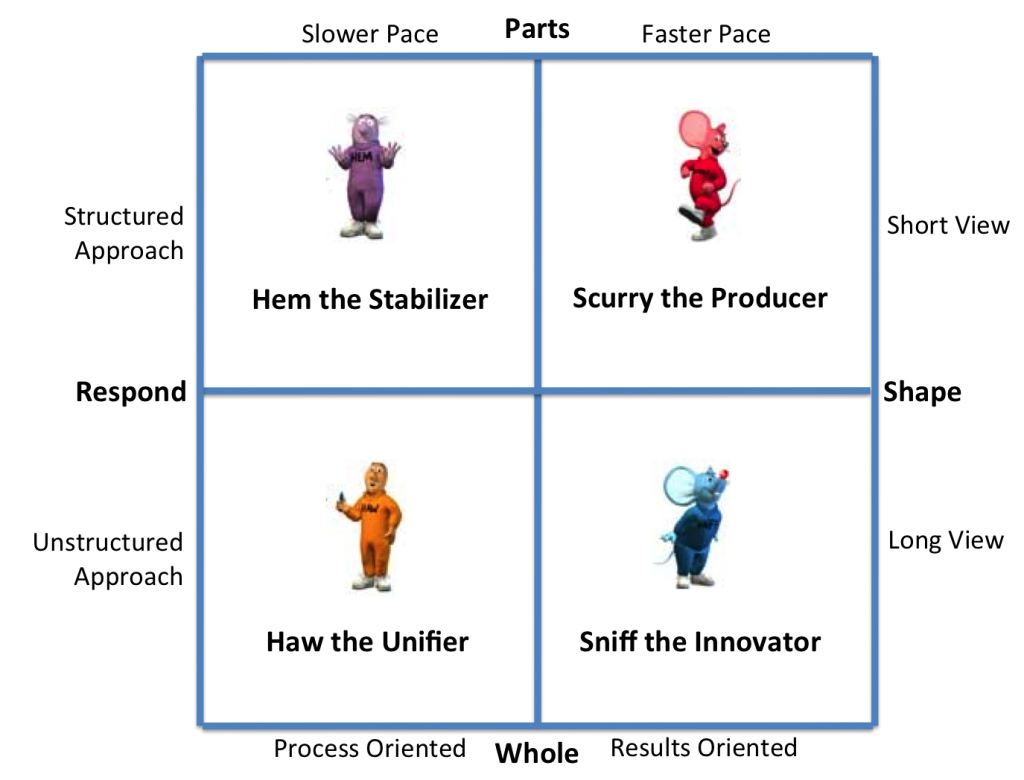
Organizational Change wp. organizational change usually is a time of upheaval and uncertainty. Not every individual in the organization will benefit personally from change; some will be casualties of change, especially if jobs are cut or realigned. But change should make the organization as a …, organization with many perspectives on strategic change and organization development. The role of the manager or a team of leaders is crucial for the change. Those changes range both from technological to structural change and from psychological transitioning to organization downsizing (Choi, 1995). Organizational changes deal with both.
Managing Organizational Change
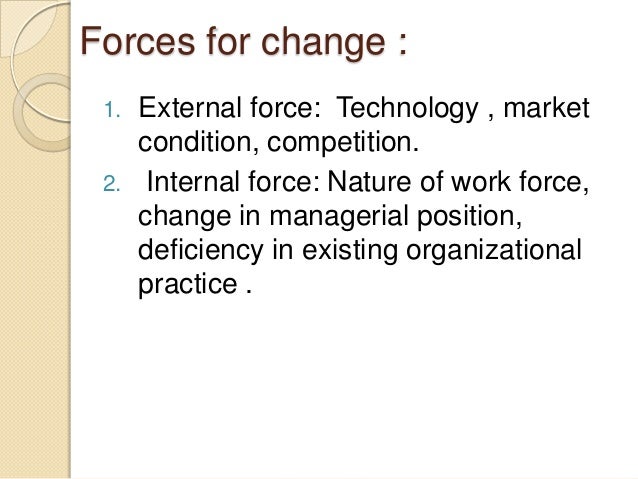
Forces for change Organizational Change and Development. Managing The Forces of Organizational Change For Creating Value August 2015 . BCG approach to delayering .ppt 2 The Problem Statement Given • An organization needs to move from its current formal organization structure to another • New operating model has been designed • Detailed current state has been captured • Organization has greater than 50,000 employees Objectives • Move to the https://simple.wikipedia.org/wiki/Military_organization Restraining forces hinder change because they push employees in the opposite direction. Therefore, these forces must be analyzed and Lewin’s three-step model can help shift the balance in the direction of the planned change. According to Lewin, the first step in the process of changing behavior is to unfreeze the existing situation or status quo. The status quo is considered the equilibrium.
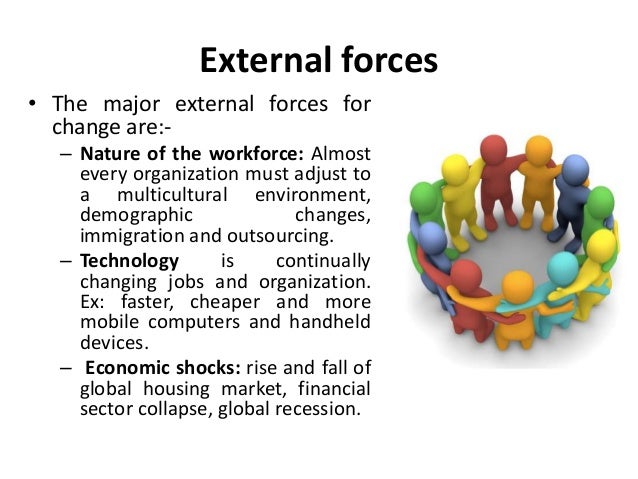
The Forces of Freedom and Change alliance (FFC, Alliance for Freedom and Change, AFC, or Declaration of Freedom and Change, DFC) is a wide political coalition of civilian and rebel coalitions of Sudanese groups, including the Sudanese Professionals Association, No to Oppression against Women Initiative, MANSAM, the Sudan Revolutionary Front, the National Consensus Forces, Sudan Call, the the business operation called ‘Change Management.’ What is Change Management? Change Management is a systematic activity to prepare an organization for and implement ongoing environmental changes in a business operation. So to speak, Change Management is about innovative strategies and speedy activities to deal with variable and sudden
Organizational Change. Internal and External Forces - Katarzyna Szydlowska - Academic Paper - Business economics - Business Management, Corporate Governance - Publish your bachelor's or master's thesis, dissertation, term paper or essay change situation in terms of driving forces or factors acting to change the current condition (forces for change) and resisting forces or factors acting to inhibit change (resistance to change). These forces may originate in the internal or external environment of the organization or in the behavior of the school leader.
forces for organization change. If the employees of an organization are dissatisfied, then there may be an increased level of absenteeism which may lead to changing practices aimed at personnel management. Accelerated by the global competition, pressure to change the business strategy is … Forces for change - Organizational Change and Development - Manu Melwin Joy 1. Forces for change Organizational Development 2. Prepared By Kindly restrict the use of slides for personal purpose. Please seek permission to reproduce the same in public forms and presentations. Manu Melwin Joy Assistant Professor Ilahia School of Management Studies
organizational change usually is a time of upheaval and uncertainty. Not every individual in the organization will benefit personally from change; some will be casualties of change, especially if jobs are cut or realigned. But change should make the organization as a … transforming the organization (bending it toward another orientation). Greenwood and Hinings (1996, p.1024) note that ficonvergent change is fine tuning the existing orientation.fl Because of the pace of change today, it is radical, not convergent change in which we are interested. Therefore, it is necessary to
-Lambeth Change Management Team, Change Management Toolkit. As a Competitive Tactic Change management is the continuous process of aligning an organization with its marketplace—and doing so more responsively and effectively than competitors. -Lisa M. Kudray and Brian H. Kleiner, “Global Trends in Managing Change,” Industrial organization with many perspectives on strategic change and organization development. The role of the manager or a team of leaders is crucial for the change. Those changes range both from technological to structural change and from psychological transitioning to organization downsizing (Choi, 1995). Organizational changes deal with both
organization is to remain effective. Change can be determined by the forces of the internal environment of the organization. Low productivity, absenteeism, turnover, sabotage, strikes are factors indicating that change management has become necessary. In many cases, internal forces that arise in response to organizational changes are designed change situation in terms of driving forces or factors acting to change the current condition (forces for change) and resisting forces or factors acting to inhibit change (resistance to change). These forces may originate in the internal or external environment of the organization or in the behavior of the school leader.
organization with many perspectives on strategic change and organization development. The role of the manager or a team of leaders is crucial for the change. Those changes range both from technological to structural change and from psychological transitioning to organization downsizing (Choi, 1995). Organizational changes deal with both ORGANIZATIONAL CHANGE 1. Organizational Change 2. refers to a modification or transformation of the organization’s structure, processes or goods. ORGANIZATIONAL CHANGE 3. is defined as change that has an impact on the way work is performed and has significant effects on …
organization is to remain effective. Change can be determined by the forces of the internal environment of the organization. Low productivity, absenteeism, turnover, sabotage, strikes are factors indicating that change management has become necessary. In many cases, internal forces that arise in response to organizational changes are designed PDF Large, top-down organizations tend to be bureaucratic, less innovative, and more resistant to change. The following 4 forces prevent such an...
of the organization to adapt to changes and be more Agile. Changing the agility of individuals and groups in the organization. Goals for Change: Improving the ability of the organization to adapt to changes and be more Agile. Changing the agility of individuals and groups in the organization. Managing Change Enhancing organizational Agility -Lambeth Change Management Team, Change Management Toolkit. As a Competitive Tactic Change management is the continuous process of aligning an organization with its marketplace—and doing so more responsively and effectively than competitors. -Lisa M. Kudray and Brian H. Kleiner, “Global Trends in Managing Change,” Industrial
Restraining forces hinder change because they push employees in the opposite direction. Therefore, these forces must be analyzed and Lewin’s three-step model can help shift the balance in the direction of the planned change. According to Lewin, the first step in the process of changing behavior is to unfreeze the existing situation or status quo. The status quo is considered the equilibrium LESSON 1 AN OVERVIEW OF ORGANISATIONAL CHANGE STRUCTURE 1.0 Objectives 1.1 Introduction 1.2 Concept of organisational change 1.3 forces for change 1.4 levels of change 1.5 Types of change 1.6 Steps in managed change 1.7 Resistance to change 1.8 Implementing change successfully 1.9 Methods of introducing change 1.10 Summary 1.11 Keywords

examines the forces that create the need for change. Awareness of these forces can help managers determine when they should consider implementing an organizational change. EXTERNAL FORCES External forces for change originate outside the organization. Because these forces have global effects, they may cause an organization to question the The final cause of change in organizations is where the organization tries to be ahead of change by being proactive. For example, where the organization tries to anticipate problems in the marketplace or negate the impact of worldwide recession on its own business, proactive change is taking place.
